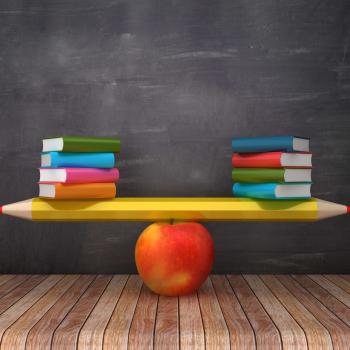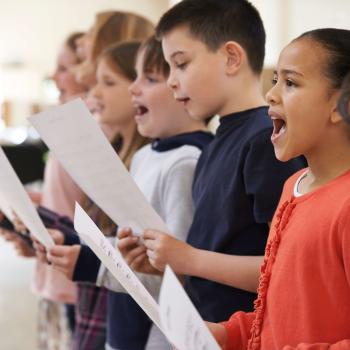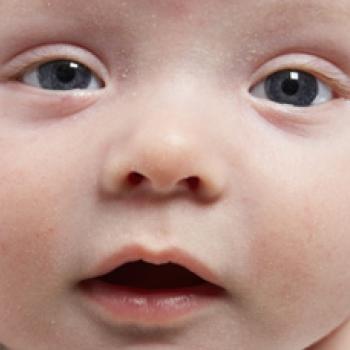After reading two math-related books, students investigate their home and school environments to find examples of objects that come in sets and then create their own books on sets.

Exploring Sets through Math-Related Book Pairs

Grades
|
What If We Changed the Book? Problem-Posing with Sixteen Cows
3 - 5
Lesson Plan
| Standard Lesson
After reading a piece of math-related children's literature aloud, students pose and solve new problems by asking what-if questions about the events in the story.

Grades
|
Reading Literature in Translation: Beowulf as a Case Study
9 - 12
Lesson Plan
| Standard Lesson
Using several translations of the same passage of Beowulf, this lesson introduces students to the idea that translation is not an objective practice, but that it involves "imaginative reconstruction."

Grades
|
An Introduction to Beowulf: Language and Poetics
11 - 12
Lesson Plan
| Standard Lesson
Students are introduced to Old English and the poetic devices of alliteration, kenning, and compounding in preparation for reading the epic poem Beowulf.

Grades
|
The History Behind Song Lyrics
6 - 8
Lesson Plan
| Unit
Students research the items listed in the song "We Didn't Start the Fire" by Billy Joel, noting their historical relevance, and then document their findings using an online chart.

Grades
|
Exploring Satire with The Simpsons
9 - 12
Lesson Plan
| Standard Lesson
This lesson uses an example from popular culture, The Simpsons, as a means to explore the literary technique of satire and to analyze a satirical work.

Grades
|
Exploring Satire with Shrek
9 - 12
Lesson Plan
The movie Shrek introduces the satirical techniques of exaggeration, incongruity, reversal, and parody. Students brainstorm fairy tale characteristics, identify satirical techniques, then create their own satirical versions of fairy tales.

Grades
|
Using Picture Books to Teach Plot Development and Conflict Resolution
3 - 5
Lesson Plan
| Standard Lesson
Students read picture books to explore the concepts of plot development and conflict resolution. They first learn about the connections between reading and writing, and then revise their own writing.

Grades
|
Examining Plot Conflict through a Comparison/Contrast Essay
3 - 5
Lesson Plan
| Unit
Students explore picture books to identify the characteristics of four types of conflict. They then write about a conflict they have experienced and compare it to a conflict from literature.

Grades
|
Id, Ego, and Superego in Dr. Seuss's The Cat in the Hat
9 - 12
Lesson Plan
| Unit
Dr. Seuss's The Cat in the Hat is used as a primer to teach students how to analyze a literary work using plot, theme, characterization, and psychoanalytical criticism.

Grades
|
Literary Characters on Trial: Combining Persuasion and Literary Analysis
6 - 8
Lesson Plan
| Unit
Students stage a mock trial for a literary character, with groups of students acting as the prosecution, defense, and jury.

Grades
|
Improving Fluency through Group Literary Performance
K - 2
Lesson Plan
| Standard Lesson
Students participate in shared reading, choral reading, and readers theater, using books by Bill Martin, Jr. Repeated readings and literary performances help students with their reading accuracy, expression, and rate.

Grades
|
Literary Scrapbooks Online: An Electronic Reader-Response Project
9 - 12
Lesson Plan
| Unit
Students capture scraps of information from a variety of Web resources and use them to create an electronic scrapbook. Emphasis is placed on evaluating and citing resources.

Grades
|
Heroes Are Made of This: Studying the Character of Heroes
9 - 12
Lesson Plan
| Unit
Designed to explore the hero and the heroic in literature, this unit asks students to discuss their ideas of heroism and analyze heroes in literature.

Grades
|
Reader Response in Hypertext: Making Personal Connections to Literature
9 - 12
Lesson Plan
| Standard Lesson
Students write a narrative of place, a character sketch, an extended metaphor poem and a persuasive essay then link all four texts to quotations they have selected from a novel.

Grades
|
Weather Detectives: Questioning the Fact and Folklore of Weather Sayings
3 - 5
Lesson Plan
| Standard Lesson
Students adopt a skeptical stance and become weather detectives who ask "Why?" and "Why not?" as they investigate the history and validity of some common weather sayings.

Grades
|
Using Snowflake Bentley as a Framing Text for Multigenre Writing
3 - 5
Lesson Plan
| Standard Lesson
Using Snowflake Bentley as a model, students create a working definition of multigenre text and then use that definition to create their own multigenre piece about winter or another theme.

Grades
|
The Year I Was Born: An Autobiographical Research Project
9 - 12
Lesson Plan
| Standard Lesson
Students explore the year they were born through interviews and research, and then weave the details into a newspaper or booklet, written from another person's point of view.

Grades
|
Short Story Fair: Responding to Short Stories in Multiple Media and Genres
9 - 12
Lesson Plan
| Unit
In this activity, students read short stories and create presentations in multiple media to share in a Short Story Fair. At the fair, students explore and respond to the displays.

Grades
|
Investigating the Holocaust: A Collaborative Inquiry Project
6 - 8
Lesson Plan
| Unit
Students explore a variety of resources as they learn about the Holocaust. Working collaboratively, they investigate the materials, prepare oral responses, and produce a topic-based newspaper to complete their research.